Discovering the Apollo story
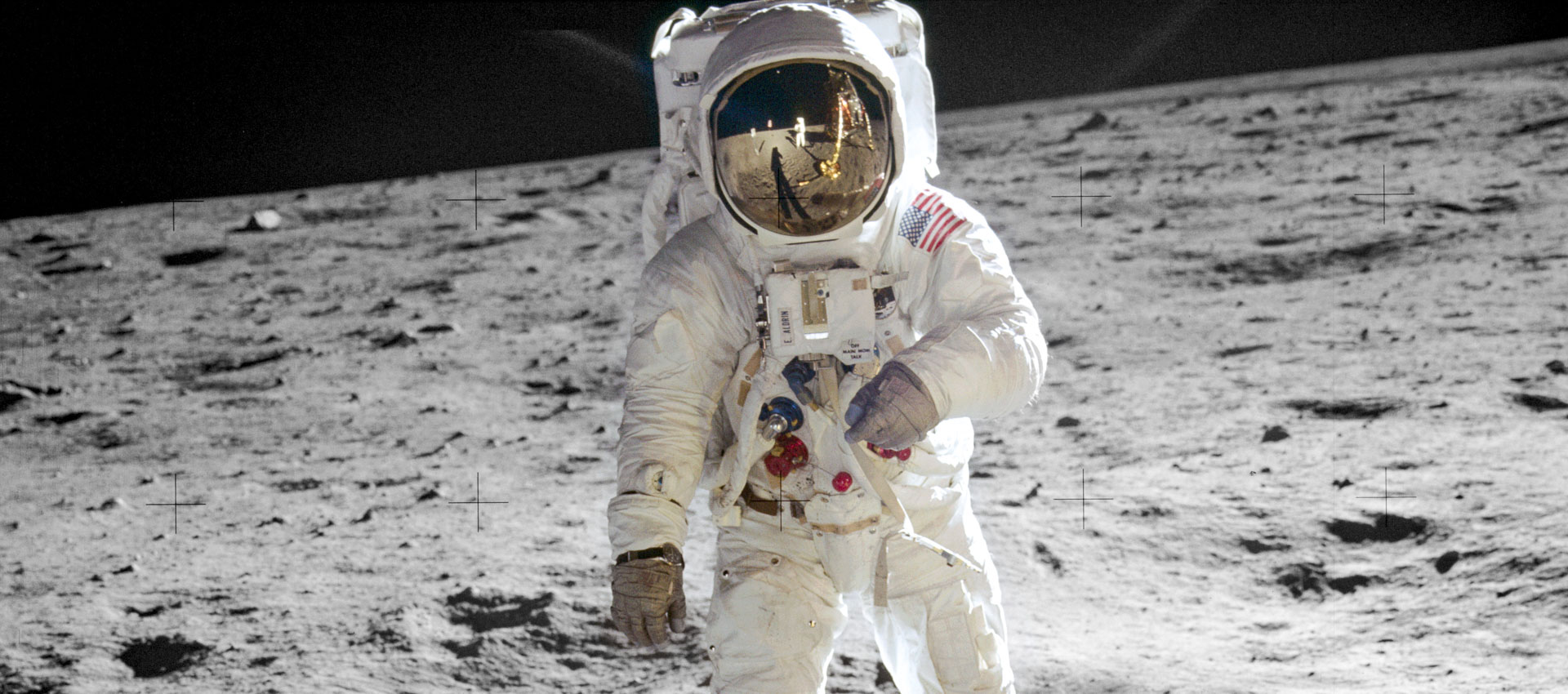
As we celebrate the 50th Anniversary of Apollo 11, we look at the Apollo story, why it's still so important today and how you can immerse yourself in humanity's greatest adventure.
This summer the world is remembering and celebrating the Apollo 11 mission. Neil Armstrong, Michael Collins and Buzz Aldrin took off from the Kennedy Space Center in Florida 50 years ago today, on the first of six flights to land man on the moon. It remains, to this day, one of the most incredible achievements of the human race. Certainly our greatest adventure. Whether you’re an Apollo aficionado, or only have a vague idea of how it all unfolded, or, like me, are of an age where you can remember the missions and the build-up to the landings, this is a story that is so rich and colourful it really demands another, closer look.
You might think you know the Apollo story, the scale of the achievement or the sheer audacity of it. The giant rockets, iconic images and famous quotes. But delve just a bit deeper, and you’ll come across a spellbinding and complicated story with many different subplots. It’s a story with, literally, a stellar cast: the alpha-male fighter jet test pilots who flew the missions. But there are many other heroes, such as the young and incredibly talented engineers who built the procedures. The flight controllers who invented mission control along the way. The thousands of other people in dozens of companies right across America who worked on the project. The vehicle itself, three spaceships in one; the largest and most powerful rocket ever built. The tiny command and service module that was home to three astronauts for several days. And the lunar module that took them down to the surface of the moon, the only flying machine ever designed that didn’t have to be aerodynamic, that would only fly in the zero atmosphere of space.
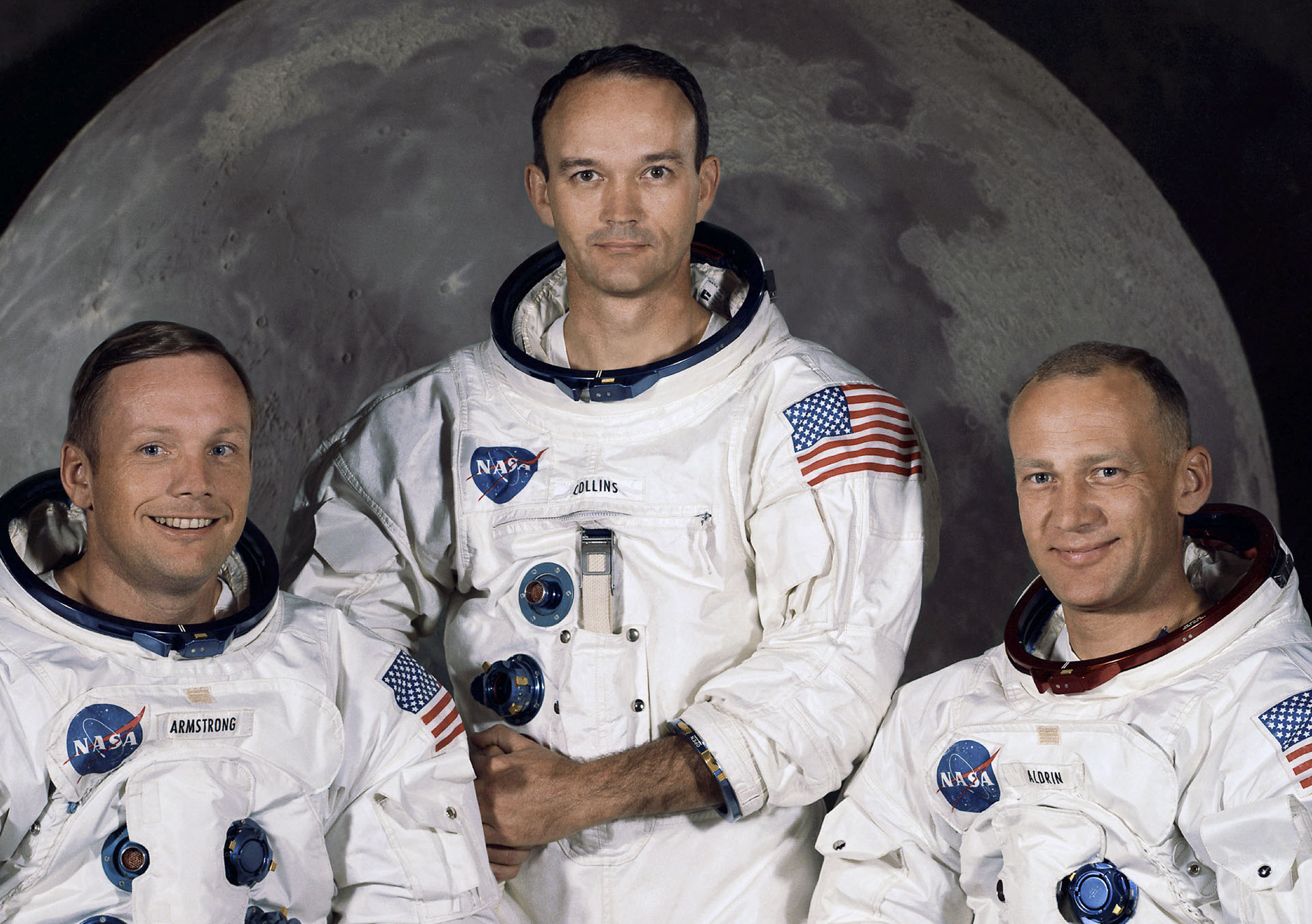
Neil Armstong, Michael Collins and Buzz Aldrin. Photo NASA
For ten years, project Apollo created everything from scratch. Nothing had ever been done before. It’s said the team had to solve over 10,000 problems. There were bold, progressive leaps between missions, each paving the way for the next, each with its own list of achievements and firsts. Apollo 8 was the first manned flight of the Saturn V rocket, the first time humans left Earth orbit and the first to fly around the moon. Apollo 10 was only the second outing for the lunar module, and it was flown within a few miles of the lunar surface. And there was also tragedy (several astronauts lost their lives during the project).
The whole endeavour took place against a backdrop of the Cold War, amid geopolitical tensions with Russia that spurred America on to lead the space race. These were pioneering days, working right at the edge of technology, engineering and fledgling computer science, where power was measured in bytes rather than megabytes. It’s also a story of politics and a challenge set by John F Kennedy – one that was to run into astronomical costs. Planning around what happened if the mission failed was paramount. Nixon had a prepared statement that makes for a harrowing read. The astronauts couldn’t get insurance (can’t think why) so NASA created unique, signed first day covers which they knew would become valuable if the mission ended in tragedy. These would be given to their families to afford some financial stability.
But above all else, this was an era of progress and optimism. So many records were broken during the project, and many still hold today, including the fastest humans in history (Apollo 10 re-entry at 24,791 mph) and the furthest a human has ever been from planet Earth (Apollo 13 was 248,655 miles from Earth as it swung around the moon on its free return trajectory). It didn’t stop at Apollo 11. Six more flights set out to the moon. Each had their own heart-stopping moments (none more so than Apollo 13), all had their own list of firsts, each their own set of characters. The Apollo programme lasted ten years, cost $28 billion, and employed 400,000 people at its peak. It brought the whole world together and proved that extraordinary things can be achieved when people pull together. It’s unlikely the world will ever see anything like it again. Everything about the Apollo story is fascinating, from the astronaut recruitment process to their life after flying. Armstrong’s withdrawal from public life, the varied careers, the tin foil hat conspiracy theories, the fact that as the missions fade further into the past the more incredible they seem. It all adds up to the greatest story ever told.
Want to find out more? Here’s the Ruby guide to Apollo sites on our network

The Apollo 10 command module, in orbit around the moon and now, in the Science Museum, London. Before Apollo 11 the astronauts were allowed to name their ships which is why Apollo ten was Charlie Brown and Snoopy. Photos NASA and Science Museum.
London: The Science Museum
The only part of the giant Saturn V rocket and Apollo spacecraft that returned to be recovered was the tiny command module (CM). About the size of a mid-sized car, these conical capsules are the most significant artefacts of the space race, and the Apollo 10 CM in the London Science Museum is the only example outside the USA. Apollo 10 launched on 18 May 1969 and was a full dress rehearsal for the first moon landing. Astronauts Thomas Stafford and Eugene Cernan flew the lunar module to 8 miles above the moon’s surface. Despite a heart-stopping loss of control during the flight they returned to Earth on 26 May giving the green light to the crew of Apollo 11 to attempt the first landing.
Washington DC: The Smithsonian National Air and Space Museum
The National Air and Space Museum is one of the best places to go and explore the Apollo programme. There is a huge amount of Apollo history on display including an early prototype of the landing module. For the first time in 13 years, to celebrate the 50th anniversary, Neil Armstrong’s space suit has been restored and is on display. Find out how to restore a space suit in this Wired article.
While in DC don’t miss out on the Steven Udvar-Hazy centre out near Dulles International airport. This vast museum of flight has some exceptional Apollo-era artefacts including the Quarantine vehicle that greeted Armstrong, Collins and Aldrin when they returned from the moon. Nobody could be sure there’d be no alien germs on the moon that followed the astronauts home, so they had to be disinfected on stepping out of the command module and spend a couple of weeks in quarantine. Several grand celebrations are due to take place in Washington over the next couple of weeks including (my favourite) the projection of an Apollo Saturn Five on the Washington Monument.
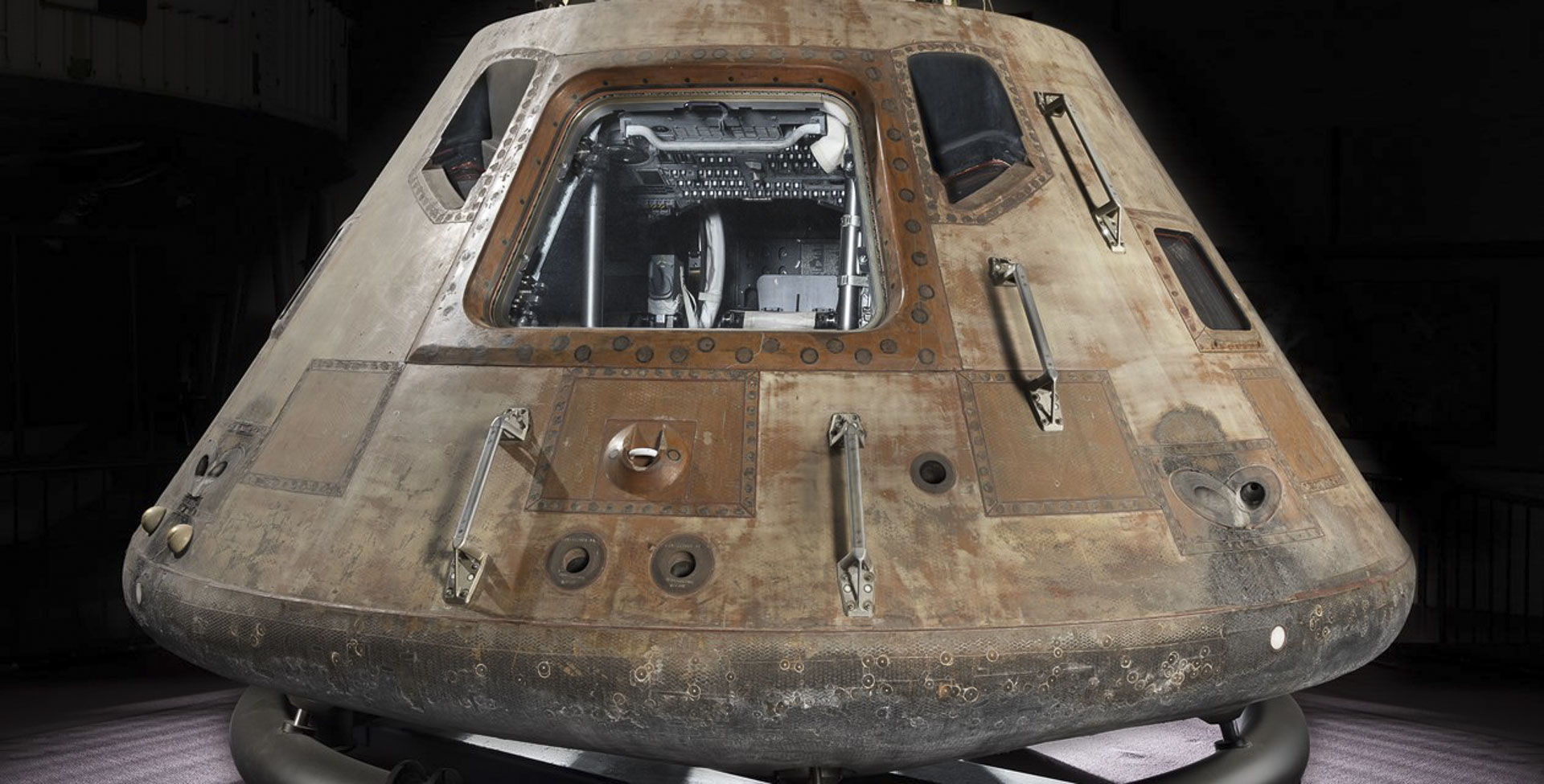
Columbia on tour in Seattle
Seattle
The Apollo 11 command module Columbia has been on an anniversary tour around America and is currently on display, along with other rare Apollo artefacts at the Museum of Flight in Seattle.
Florida: The Kennedy Space Center
The most spectacular exhibition can be found in Florida at the Kennedy Space Center, one of only two places in the world where you can find a full sized Saturn V. The lunar module on display with the rocket is the one that should have actually flown on Apollo 15, but after the cancellation of 18/19/20 the upgraded lunar modules with the capacity to carry the lunar rover car was bumped up a mission. As a result, the Apollo 15 astronauts, Dave Scott and James Irwin became the first humans to drive a vehicle on another world.
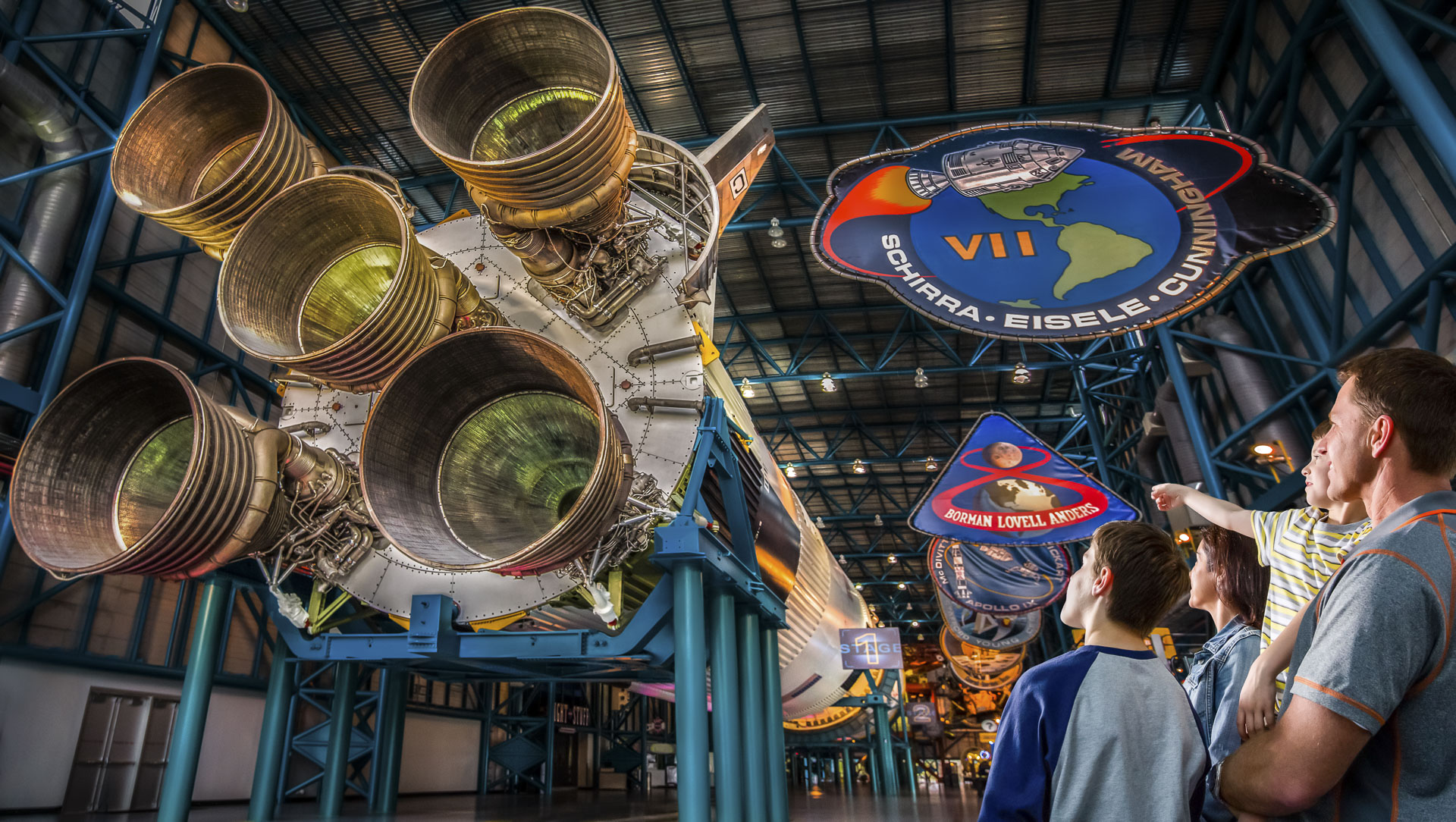
Marvel at the Saturn V rocket.
One of my favourite items in the Space Center, however, can be found outside the newly refurbished gift shop. Who doesn’t love a museum gift shop? But this is the only one where you gain access to it by walking across the historic gantry that the Apollo 8 and 11 astronauts walked across to reach their rockets. As you’d expect, the Space Center has some fantastic events lined up for the coming weeks.
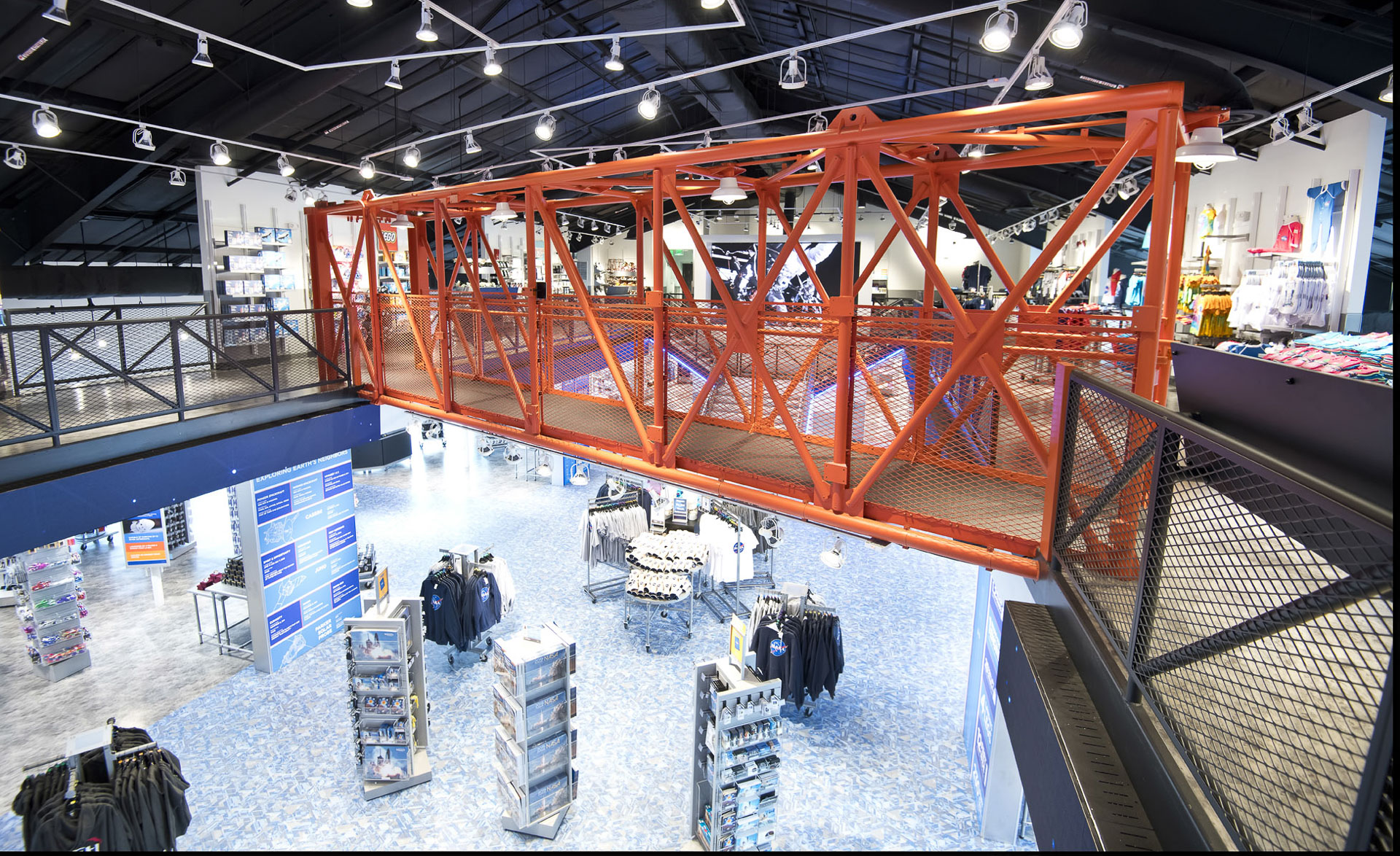
Exit through the gift shop. Only at Kennedy Space Centre, you’ll be walking in the footsteps of Armstrong, Collins and Aldrin. The gantry that captivated billions back in the 60s.
New York: The Cradle of Aviation Museum
The Lunar Module from the cancelled Apollo 19 mission (Apollo 18, 19 and 20 were all cancelled due to budget cuts) can be viewed at the Cradle of Aviation Museum, in Garden City, Long Island.
Over the next couple of weeks, there’s going to be a lot of celebrating the Apollo programme. Such was the significance of Apollo 11 that all the main channels will be carrying content about the flight. There are some great old film to watch and some really interesting new ways to tell the story. Here’s our guide to the Apollo programme for the armchair astronaut:
Websites
There’s so much content online, much of it of outstanding quality. The NASA, Smithsonian and Kennedy Space Center sites all have great content (the latter a Duran Duran concert tonight!), but my go-to website for all things Apollo has to be collectspace.com. The most knowledgeable crowd of space enthusiasts gather here to discuss space exploration in the finest detail, and there’s a comprehensive historical photo database ‘Space history photo of the week’ as well as a sightings page where you can find out where and when astronaut public appearances take place. They also host a comprehensive list of all the Apollo 50 celebrations taking place around the world.
Another favourite pastime is trawling through the Apollo auction sites. Collecting space artefacts is big business for those with seriously healthy bank balances, and there are some incredible pieces up for sale right now, such as the Apollo 11 checklist that went to the moon and back (an estimated 7-9 million dollars). Or how about a piece of the original Wright Flyer propeller that Neil Armstrong carried to the moon?
Something that stood out for me was a rare interview Neil Armstrong gave to an Australian firm of accountants in 2011. After landing back from his globe-spanning, post-flight PR tour, Armstrong made few public appearances and gave even fewer interviews, which makes this one even more interesting.
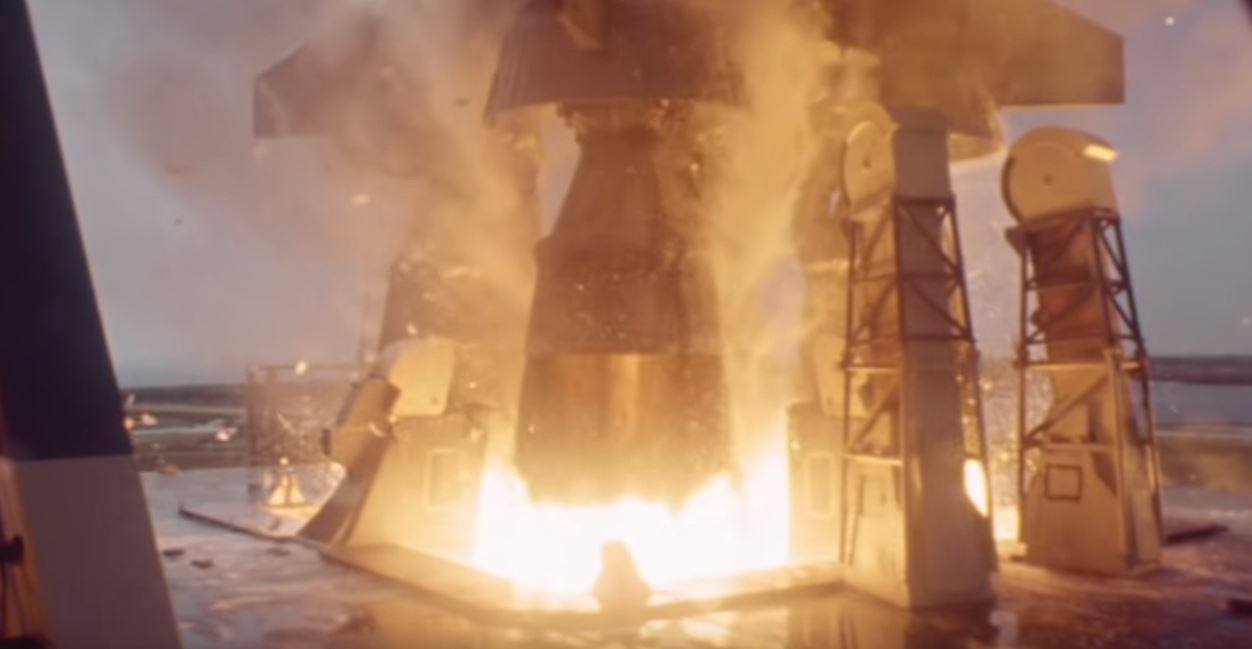
Movies
If you do one thing to celebrate the moon landing anniversary, go and see the Apollo 11 movie. It’s also showing onboard our flights this month, and I cannot recommend it enough. Created by the same teams who made the Amy and Senna documentaries, it uses original footage and a fantastic soundtrack to tell the story of Apollo 11 in the most compelling way. I also really enjoyed In the Shadow of the Moon, a 2007 movie which interviews some of the astronauts in their twilight years.
Books
For me, the books are the best bit. So many books have been written about the Apollo era, but a few really stand out. If you’re only going to read one, Carrying the Fire by Michael Collins would be my recommendation. The third member of the Apollo 11 team who stayed in orbit while Armstrong and Collins went down to the lunar surface, Collins is ideally placed to give the inside story of the mission, and does so with an easy manner and great humour. I also enjoyed:
- Last Man on the Moon by Gene Cernan, the commander of Apollo 17.
- Two sides of the Moon by Dave Scott (commander of Apollo 15) and Russian cosmonaut Alexei Leonov. It tells the story from both sides of the space race.
- Failure Is Not An Option by Gene Kranz. The enigmatic mission director talks passionately about his teams, how mission control was built and the story of Apollo 13, said to be NASA’s greatest moment.
- DEKE! The autobiography of Deke Slayton, said to be the most influential person of the Apollo era. He was head of the astronaut office and was responsible for selecting crews.
Podcast
The BBC World Service podcast series 13 minutes to the moon is brilliant. Presented by scientist and Apollo geek Dr Kevin Fong, the series goes into some seriously interesting detail about the missions. Unmissable.
Television
There is almost as much television about Apollo 11 this year as there was in 1969 when the whole world was watching. The quirkiest idea must be for the new BBC Apollo 11 documentary which has actors lip syncing to the entire mission using some never before heard tapes from the missions. Could be interesting.
Music
Spotify has a brilliant blog with some great playlists and fascinating facts.
Discover Apollo for yourself by booking your flights to London, New York, Washington DC and Seattle on our website.

